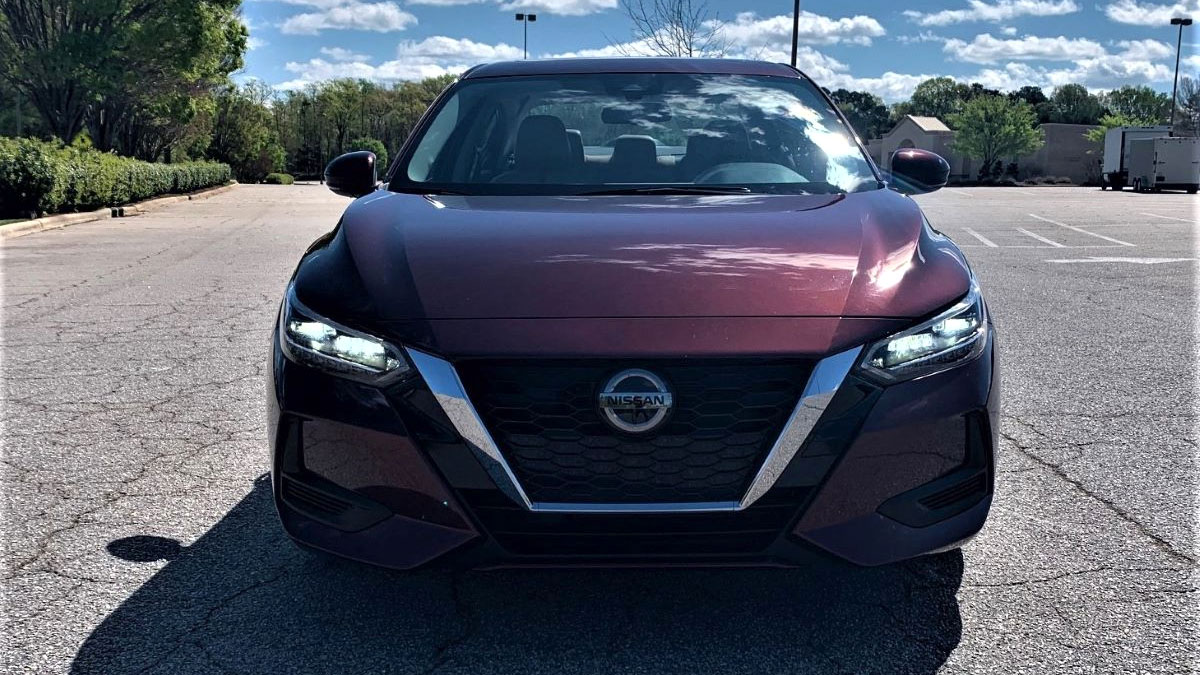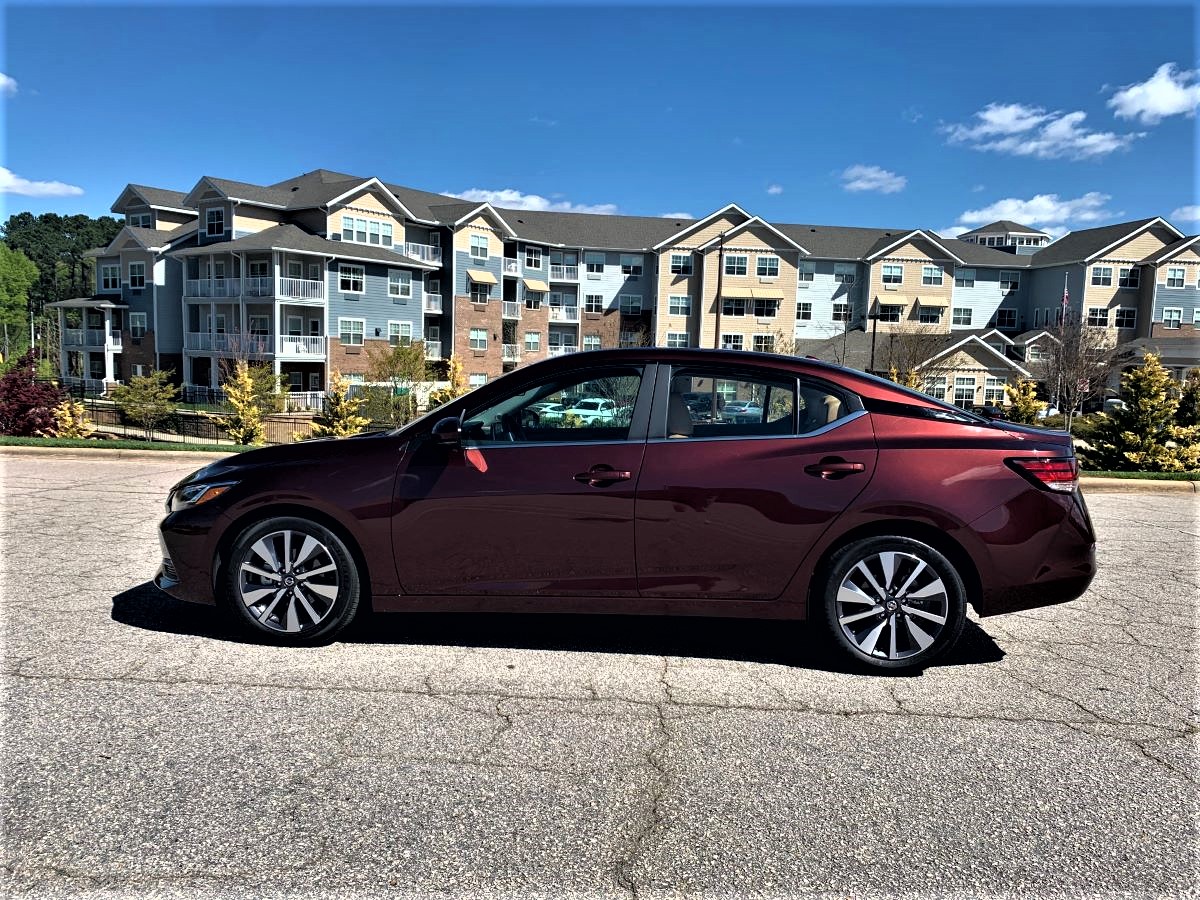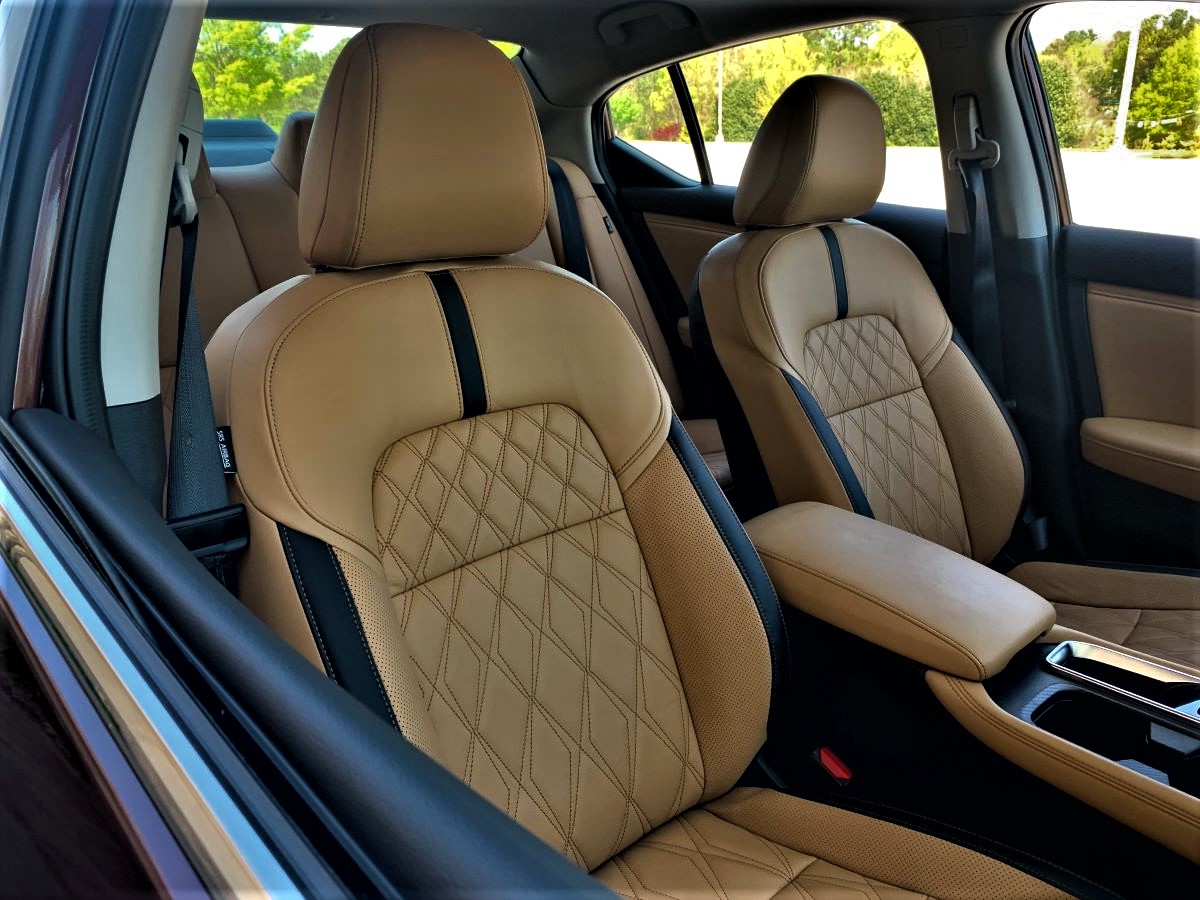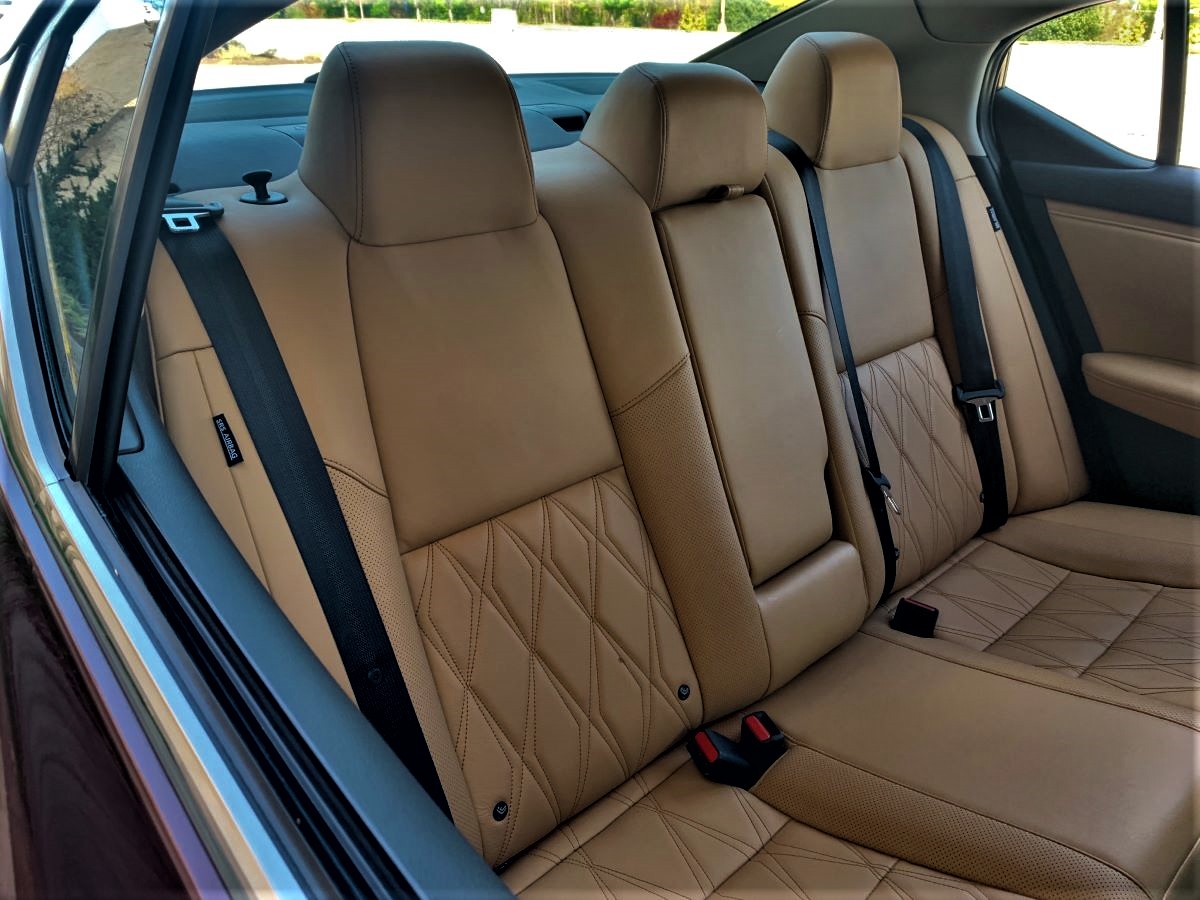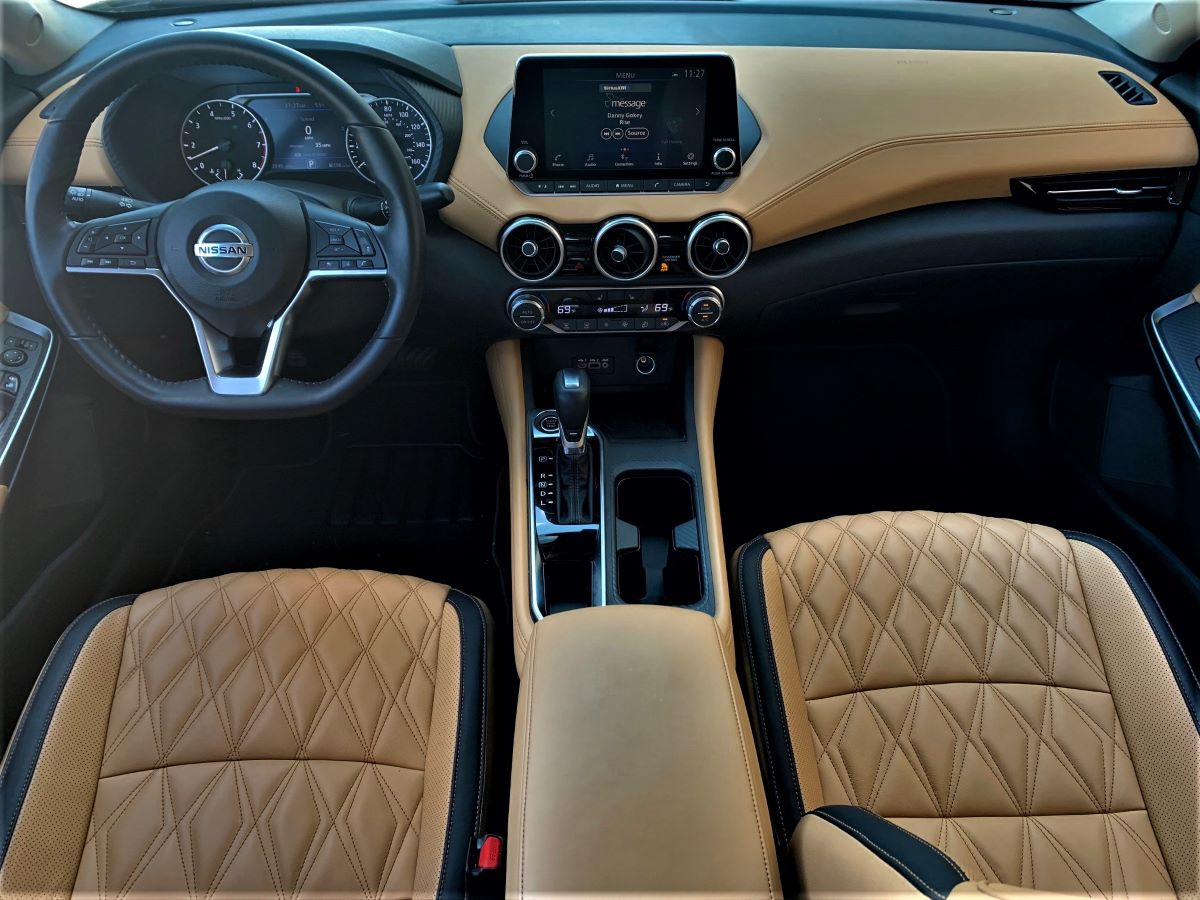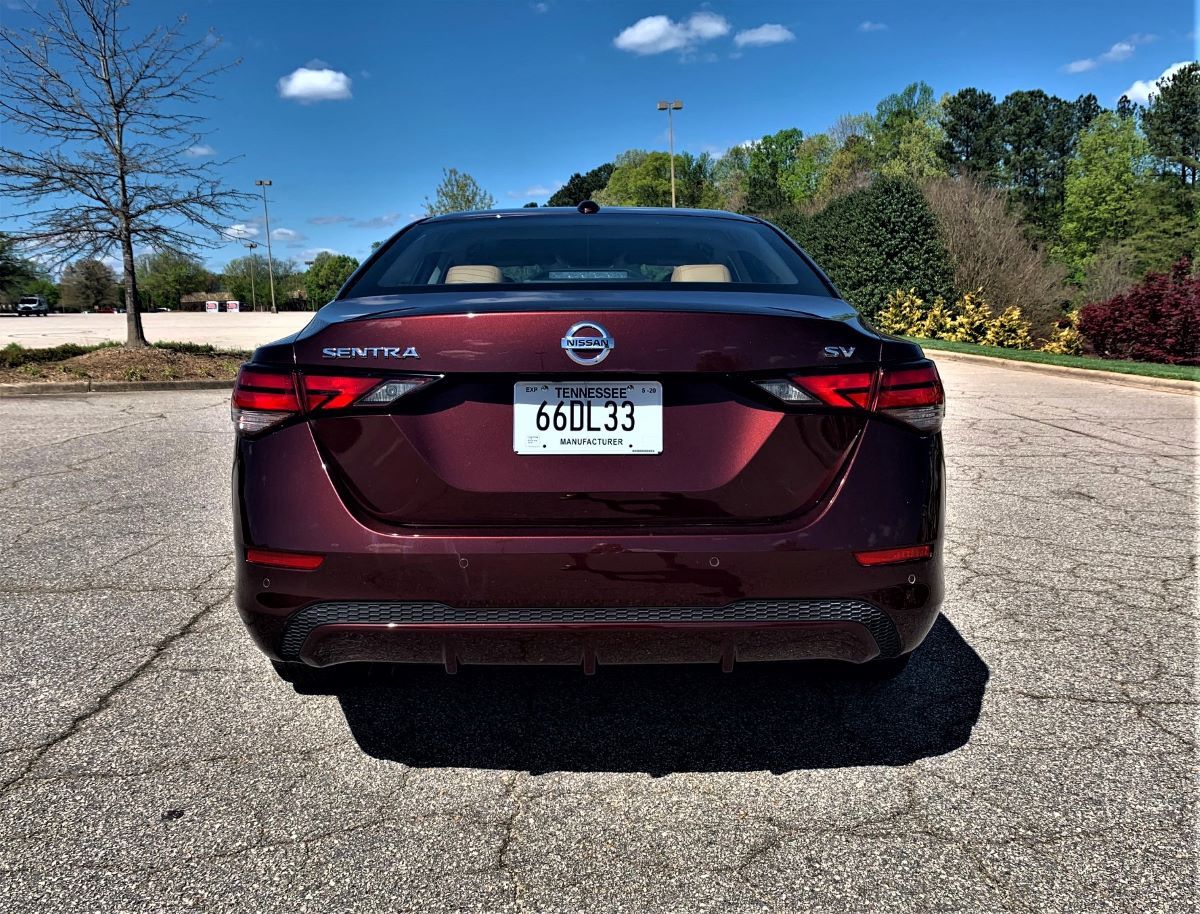The market for cars continues to shrink, but some manufacturers are doubling down even as others depart the segment. For 2020, Nissan presents an all-new Sentra, its five-passenger, front-wheel-drive compact sedan.
The latest model is its most stylish one yet and borrows elements from the popular Altima sedan.
2020 Nissan Sentra Review
Nissan offers the 2020 Sentra in three trims: S ($19.090), SV ($20,270), and SR ($21,430). That’s just a $2,340 price spread across the trim levels. Add $925 for the destination charge.
All models come with a four-cylinder engine paired with a continuously variable transmission. You’ll find one Premium Package option on the SV ($2,460) and SR ($2,170) trims.
This package adds such features as LED lights, a power sliding glass moonroof with tilt, heated front seats, a power driver’s seat with lumbar support, a heated steering wheel, imitation leather seats with contrast orange stitching, an automatic dimming rearview mirror, and an 8-speaker Bose audio system.
Exterior
You just may do a double-take when you first lay eyes on the all-new Sentra. That’s because Nissan borrowed styling cues from the handsome Altima, a midsize sedan, and brought them to the small car segment.
Up front, the Sentra has a gaping grille, narrow headlights, and distinct cutouts at the lower corners. Its profile features detailed character lines, body sculpting and a high and rising beltline. Where the roofline intersects with the beltline creates an elegant touch and gives the sedan an almost hatchback-like appearance.
A raised rear deck with narrow wraparound lights suggests a far higher price point. Happily, the Sentra is the antithesis of the econoboxes that once ruled the market.
The list of standard features includes automatic (halogen) headlights, active grille shutters, dual-power side mirrors, and 16-inch steel-covered wheels.
Move up through the trim levels and Nissan adds such features as LED lights, chrome trim, aluminum-alloy wheels, side sill extensions, a rear spoiler, and a chrome exhaust finisher. The latter three are exclusive to the sporty SR trim.
Interior
The Sentra’s cabin is the roomiest we’ve ever seen, but that shouldn’t be too surprising. Whereas cars shrunk in size from the late 1970s and throughout the 1980s, they began to stretch out again early this century. Indeed, the current Sentra is larger than the circa 2000s Altima.
As is typical of this segment, the sedans have seat placements for five, but four is the ideal. You can wedge someone in the back row middle position, but hip room is tight. Even with two back there, the legroom is fair at best.
The Sentra features a layered dashboard with a display panel situated above the center console. The instrument panel features a pair of large analog dials with a 4.2-inch (7 inches in the SR and SV models) digital driver’s panel between the two.
The standard cloth seats give way to quilted imitation leather seats when choosing the Premium Package. We point this out because our test SV model was equipped with them. They fooled us the entire week as they have the look and feel of real leather — very comfortable.
The elegance seems out of place in a small mainstream sedan, but we never complained. Instead, the package brings surprisingly welcome premium elements to the segment.
Standard features include full power accessories, air conditioning, and a tilt-and-telescopic steering column. Among the upgrades are premium or sport cloth seats, dual-zone climate control, and a leather-wrapped steering wheel and shift knob.
Tech
Nissan equips the Sentra with a 7-inch touch-screen display with voice recognition. Other features include Siri Eyes Free, Bluetooth, USB input, and an auxiliary jack. A four-speaker audio system is standard.
Move up through the ranks and Nissan makes an 8-inch touch-screen display available. It is bundled with Apple CarPlay and Android Auto, which are popular smartphone compatibility features. You won’t need navigation if you have either system. The SV and SR trims bring in a six-speaker audio system with satellite radio. Two additional USB ports are included.
Don’t forget the Premium Package for additional upgrades, including the 8-speaker Bose audio system. It’s a worthwhile choice, one that we enjoyed as we made our way around the North Carolina countryside.
Safety
Give credit to Nissan for offering several driver-assistance features as standard equipment. All trims come with high-beam assist, driver alert warning, blind-spot monitoring, lane-departure warning, rear cross-traffic warning, and automatic emergency braking front and back.
Our experience with several luxury makes reveals that some of these features are extra-cost items. At the same time, several Nissan competitors also supply advanced driver-assist features in their models. These include Toyota, Honda, Kia, and Hyundai.
Performance
You’ll find one powertrain combination in the Nissan Sentra and nothing more. But that is typical for this segment as manufacturers go with what works best and leave it at that.
Under the hood of every 2020 Sentra is a 2.0-liter four-cylinder engine that develops 149 horsepower and 146 pound-feet of torque. Power travels to the front wheels utilizing a continuously variable transmission.
The Sentra’s most efficient model earns an EPA-estimated 29 mpg in the city and 39 mpg on the highway. You should have no problem approaching 35 mpg under most driving circumstances.
Step-off acceleration is adequate, although far from exciting. The Sentra is a Point A to Point B model, which means it does what it needs to do to take you where you’re going. Under hard acceleration the engine whines as the CVT stretches and ascend the RPM curve.
Thankfully, Nissan technology intercedes by dropping RPMs at various times, which takes pressure off the engine. You might be fooled into thinking a geared transmission is at work. If so, Nissan got this right.
Steering is light to the touch and the Sentra handles fairly on twisty roads and while cornering. Again, performance is not this sedan’s virtue, but we’ve witnessed changes down through the years that make the Sentra a better ride and a more enjoyable driving vehicle than before.
Competitive Set
The small car segment is shrinking, especially as brands such as Dodge, Ford, and Chevrolet exit. That said, there are still several models to compare, including the Toyota Corolla and Honda Civic. Other compact sedans and hatchbacks include the Kia Forte, Mazda3, Subaru Impreza, Hyundai Elantra, and the Volkswagen Golf.
Our Recommendation
We typically don’t recommend the base trim for any model and that holds true for the Nissan Sentra. That said, the list of standard features is impressive, so you won’t go wrong by choosing the S trim.
We think either the SV or SR trims are the better choice, mostly for the added amenities, including the upgraded audio system, smartphone compatibility, and the premium cloth seats.
Yet, we would also add the Premium Package for the value it represents for the amenities offered. This is especially important if you plan to keep your Sentra for the long term as you’ll enjoy a nicely appointed vehicle that should look great for years to come.
See Also – Style Maker: The All-New Nissan Versa
2020 Nissan Sentra Specifications
| Nissan | 2020 Sentra |
|---|---|
| Segment | Compact Sedan |
| Price Range | $19,090 to $21,430 |
| Destination Charge | $925 |
| Standard Engine | 2.0-liter, I4 |
| Horsepower | 149 hp @ 6,400 rpm |
| Torque (lb.-ft.) | 146 lb.-ft. @ 4,400 rpm |
| Transmission | Xtronic |
| Seating | 5 |
| Curb Weight (pounds) | 3,047 to 3,084 |
| Wheelbase (inches) | 106.8 |
| Length (inches) | 182.7 |
| Width (inches) | 71.5 |
| Height (inches) | 56.9 |
| Headroom (f,r…inches) | 38.9, 36.7 |
| Legroom (f,r…inches) | 44.0, 37.4 |
| Shoulder room (f,r…inches) | 56.4, 54.5 |
| Hip room (f,r…inches) | NR |
| Storage (cubic feet) | 14.3 |
| Gross vehicle weight (pounds) | 3,957 to 4,001 |
| Towing (pounds) | NR |
| Payload (pounds) | NR |
| Fuel | regular |
| Fuel Tank (gallons) | 12.4 |
| EPA Fuel MPG (city/highway/combined) | 29/39/33 |
| Manufacturing Plant | Smyrna, Tennessee |
Data compiled by Tom Keegan. Specifications supplied by the manufacturer.
See Also – Small Nissan Crossover SUVs: Kicks, Rogue Sport and Rogue
Photos copyright Auto Trends Magazine. All rights reserved.
- 2024 Mazda CX-50: A Compact SUV with Premium Aspirations - Apr 15, 2024
- 2024 Ford Mustang (Iconic Pony Car Evolves) - Apr 4, 2024
- 2024 Ford Maverick (Looks Like a Truck, Drives Like a Car) - Mar 28, 2024

